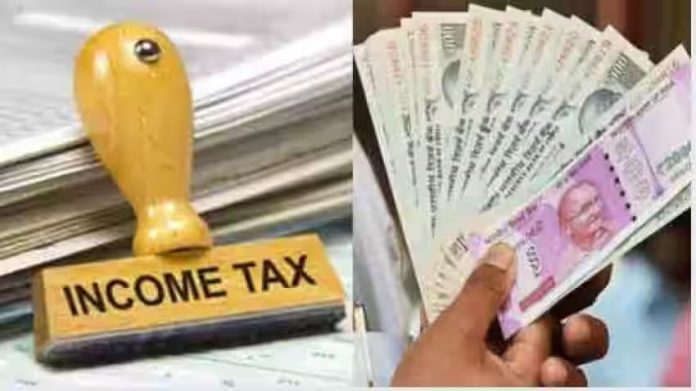According to income tax rules, tax can be saved if tax deductions and tax exemptions are used properly. However, for this you will have to keep your salary structure in such a way that the tax scope is not high.
The New Year has started. It is time for new financial planning. But, before that, efforts should be made to save tax for the current financial year. If you plan, you can save tax. Believe me, if the planning is correct then there will be no tax on your earnings i.e. salary. Means zero tax.
Will have to avail the benefit of reimbursement
According to income tax rules, tax can be saved if tax deductions and tax exemptions are used properly. However, for this you will have to keep your salary structure in such a way that the tax scope is not high. Apart from this, you can avail more benefits from reimbursement.
What needs to be done for zero tax?
Now the matter is that in order to avoid any tax on salary, the coordination between investment and savings will have to be maintained. If your salary is Rs 12 lakh and you take full advantage of reimbursement and investment tools, then definitely there will be no tax on the salary. The entire salary will be received without tax.
What should be kept in the salary structure?
The option to change the salary structure remains in your hands. You can also request this from company HR. There is a limit on reimbursement. But, it can have multiple tools. Convance, LTA, entertainment, broadband bills, petrol bills and entertainment or food coupons can also be used in reimbursement. With the help of all this, tax can be saved. Apart from this, there is also the option of HRA to save tax.
This is how you get benefits in HRA
Three figures are included in claiming HRA. Tax exemption will be given on the one which is lowest among these three. In the salary structure, the HRA given by the company is according to metro and non-metro cities. There is an exemption to claim HRA up to 50% of the basic salary in a metro city and up to 40% of the basic salary in a non-metro city. The amount that is left after deducting 10 percent of the basic salary from the total rent can be claimed as HRA.
How will your HRA be decided?
The fare in metro city is Rs 20 thousand. Meaning 20 percent of your total monthly salary. Basic salary will be 50 percent of CTC. In this case your basic amount is Rs 6 lakh. If you get HRA of about 40 percent of the basic salary from the company, then you will get HRA of about Rs 2.40 lakh annually.
But, since you live in a metro city, you can take HRA up to 50 percent i.e. Rs 3 lakh. At the rate of Rs 20 thousand, the annual rent was Rs 2.40 lakh. From this, after deducting 10 percent of basic salary i.e. Rs 60 thousand, the total HRA became Rs 1.80 lakh. Now Rs 1.80 lakh is the lowest among the three figures given above. In this situation you can claim Rs 1.80 lakh annually.
LTA- Leave Travel Allowance
LTA benefit can be availed twice in 4 years. This includes the travel plan fare. This is 10 percent of your basic salary. LTA of Rs 60 thousand will be available on basic salary of Rs 6 lakh. If we look at the annual average, tax exemption can be availed on Rs 30 thousand.
How will you get the benefit of reimbursement?
1. Conveyance Allowance: Those in the salary bracket of Rs 12 lakh usually get a reimbursement of Rs 1-1.50 lakh. Meaning, conveyance allowance of Rs 1.50 lakh will be completely non-taxable.
2. Broadband bill: Tax exemption can also be available on broadband bill. Get it included in the reimbursement. For this, an allowance of Rs 700-1000 is available every month. Let us assume that under this you get Rs 1000 every month i.e. your annual non-taxable salary will be Rs 12000.
3. Entertainment Allowance: Entertainment Reimbursement can be claimed by showing the food bill. Those with salary up to Rs 12 lakh will be non-taxable up to Rs 2000 i.e. Rs 24 thousand every month.
4. Uniform, Books or Petrol Bills: Different companies give reimbursement in the name of uniform, petrol or books bills. In this category also you can take Rs 1000-2000. By taking Rs 1,000 as reimbursement every month, Rs 12,000 annually will come into the non-taxable category.
You will definitely get income tax deduction
Some deductions are available in the Income Tax Act, which help in reducing the taxable salary.
1- Basic Income Exemption: Salary up to Rs 2.5 lakh has been kept non-taxable under income tax rules. Meaning, no exemption tax will be levied on your total salary up to Rs 2.5 lakh. But, it is calculated in the end.
2. Standard Deduction: First of all, standard deduction of Rs 50 thousand will be available. Meaning, whatever your salary, subtract Rs 50 thousand from it.
3- Section 80C: In this, you can get tax exemption on investment up to Rs 1.50 lakh. It includes tools like EPF, PPF, Sukanya Samriddhi Yojana, NPS, child’s tuition fees, LIC, home loan principal. You can claim a deduction of Rs 1.50 lakh by using its entire limit.
3- Section 80CCD(1B): In this, one gets the benefit of investing additional Rs 50 thousand in NPS.
4- Section 80D: In this, you can save tax up to Rs 25 thousand by taking health insurance for yourself. Apart from this, you can also avail tax exemption up to Rs 25 thousand on health insurance of parents. The total deduction in this can be up to Rs 50 thousand. If the parents are above 65 years of age, then the limit of senior citizen deduction will be Rs 50 thousand. In such a situation, you can save tax up to Rs 75 thousand. At present, you will be able to save tax on a total of Rs 50 thousand in 80D.
Now understand the complete calculation of taxable and non-taxable
- First HRA– In this, tax exemption up to Rs 1.80 lakh will be available.
- Second Reimbursement – If you add all the reimbursements together, you will get a total reimbursement of Rs 1.98 lakh.
- Third Deduction– Total deduction of Rs 3 lakh will be available.
- Fourth Leave Travel Allowance (LTA) – Tax exemption of Rs 30 thousand will be available. There will be no tax on Rs 7.08 lakh from your total salary.
Now income tax will be 0
The total annual salary is Rs 12 lakh. Of this, there will be no tax on Rs 7.08 lakh. Now the taxable salary left is Rs 4.92 lakh. Now another rule of income tax will come here. If taxable salary is less than Rs 5 lakh then you will get rebate under section 87A.
There is 5 percent tax on salary between Rs 2.5 to Rs 5 lakh, but if the total taxable salary is less than Rs 5 lakh, then a rebate of Rs 12,500 will be available on Rs 2.5 lakh. After this, the remaining Rs 2.50 lakh will be kept under the basic exemption limit. In this way your entire salary will be tax free. In this way your entire tax becomes zero (0).















